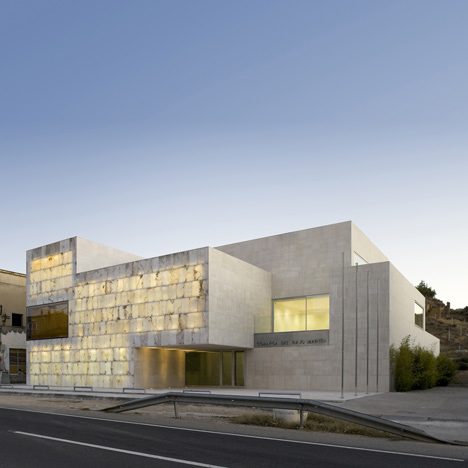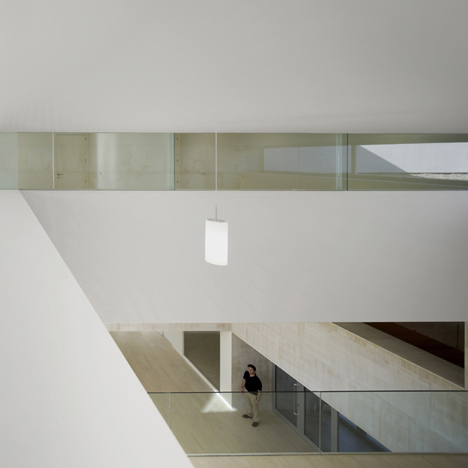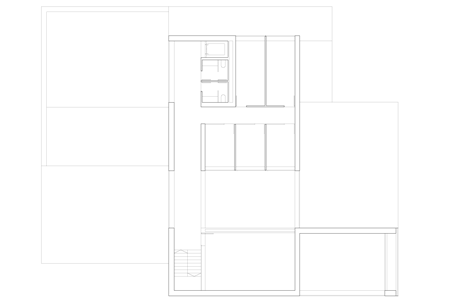
Light permeates this civic hall designed by Magén Arquitectos in southern Spain through blocks of alabaster in the facade.

The building is constructed from translucent alabaster and opaque limestone that were extracted from native quarries.

The harsh geometry contrasts with the warmer, softer bamboo finish that can be found in the more significant internal spaces where the delegates gather.

White stone walls allude to the sobriety and plainness of traditional Iberian vernacular as well as referencing material groups from local quarries.

Three bands organise the spaces: the first and second hold the access, lobby, management and adminstration spaces while the third band holds less public spaces such as the auditorium and classrooms.

Photography is by Pedro Pegenaute
Here are some more details from Magen Arquitectos:
The Bajo Martin County is formed by nine historic populations in Teruel, located in the basin of the River Martin. Alabaster, which is extracted from quarries in the area, is one of its main resources, dedicated to both the export and cultural promotion, through routes, meeting craft and art activities, organized annually by the Center for Integrated Development of Alabaster.

The site is located on the outskirts of Hijar, capital of the county, along the national highway N-232 and the old abandoned silo. It was a dysfunctional urban environment, including existing industrial buildings, and the front of residential townhouses, just across the road.

The absence of urban qualities in the environment legitimizes a certain autonomous condition of the building, rising from the land to form a unified solution, clear and compact. Therefore, the necessary link of building and place, reinforced by its institutional character, not articulated from urban relationships with the immediate environment, but from references to geographical landscape, history and culture, present in their external configuration. The group of carved volumes on local materials -stone and alabaster, alludes, in an abstract and geometric way, to stone groups that occur in quarries in the area. The stone surfaces, opaque or translucent, exhibit materials and expressive features of alabaster in relation to the day or night lighting.

The ordered group volumes in the outside, compact, heavy and massive, is poured inside. The space pierces and perforates the solid volume, producing a dynamic system of voids, connected visually and spatially, diagonally, linking the three floors and articulating the circulation spaces, access and meeting. The continuity with the outside material and the presence of natural light into the interior through various gaps, strengthen the condition of the interior space as empty excavated, drawn from the section as a fundamental tool of the project.

The functional organization of the project is divided into three bands constructed parallel to the path. The first is the plenary hall access and, second, the lobby and areas of management and administration, and third, to the auditorium and classrooms. The distribution of plants distinguishes between the more public areas at ground and first floors, and more related to internal management and work in the second. In contrast to the stone walls inside the bamboo wood finish in the most significant spaces such as the plenary hall, underscores its public, institutional and representative.

You have read this article Architecture /
Featured
with the title Bajo Martin County Seat by Magén Arquitectos. You can bookmark this page URL http://moderndeserthomes.blogspot.com/2012/03/bajo-martin-county-seat-by-magen.html. Thanks!



No comment for "Bajo Martin County Seat by Magén Arquitectos"
Post a Comment